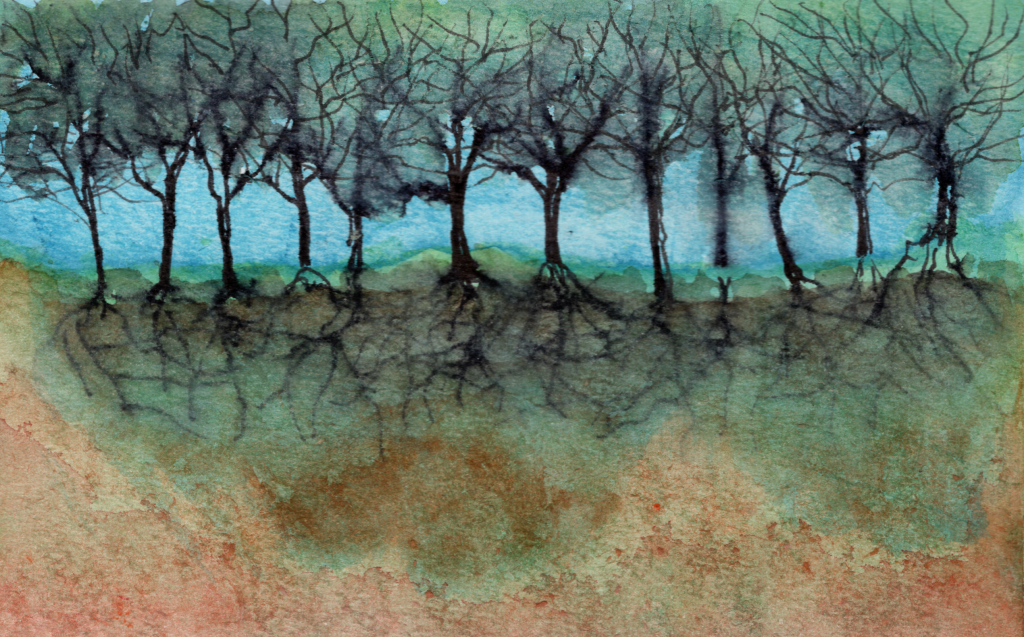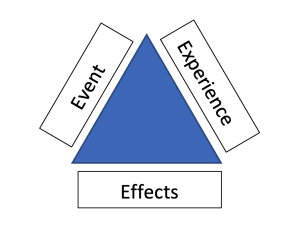1 What is Trauma?
Dr. Erin Hambrick

“Trauma is too much, too little, too fast.”
-Dr. Peter Levine
Dr. Gaskill: Child: Development and Neuroscience
When we are very young, we rely on our environment to teach us about the world that we live in. Newborns completely trust their senses – the sounds caregivers make, the warmth of a caregiver’s body, and the sweet taste of milk – for information about what they need, who can provide it, and if they are safe. People are born “experience-expectant” and without nurturing experiences in their early life, they cannot thrive (McLaughlin, Sheridan, & Nelson, 2017). We are particularly influenced by our environment when we are little because our first experiences create templates for what life is like, and we compare our later experiences to these templates. When our early relationships and environments are predictable, responsive, and soothing, we can more readily tolerate the inevitable challenges that come our way. We expect good things to happen, and we seek new learning opportunities from our world.
PRO TIP
The quickest and simplest way to calm nerves and soothe stress is through activating the sensory system. Next time you are stressed or edgy, rock in a rocking chair, pace around a room, play with a fidget toy, listen to a soothing song, light a candle or take a nature walk (outdoor sights and sounds are particularly soothing to our sensory system!). It sounds simple, but when our sensory system tells us, “We are safe,” that allows the rest of our brain to work more efficiently and get back on track toward tackling the problems we face. Bonus – Help a student use one of these strategies!
Early experiences, both positive and negative, greatly shape the way our brain develops. If we lack positive experiences and have many negative experiences early in life, then we come to expect the world to be a frightening place, one in which our needs are rarely met or must be fought for. Although we do not explicitly remember our early years, their influence on our ability to handle stress, our perceptions of others, our perceptions of our own abilities, and our perceptions of our safety persist. To an infant, potentially traumatic experiences include going without touch for hours at a time, not having a responsive feeding schedule, being physically shaken, being underfed, being too hot or too cold for prolonged periods of time, frequent and persistent caregiver changes, and living in chaotic, loud and unpredictable environments, including exposure to caregiver violence.
Erin Hambrick 1: Self –Regulation
As we age and become better at understanding language and the meaning of various life experiences, a broader array of events become perceived as traumatic. For example, bullying, emotional maltreatment, sexual abuse, exposure to natural disasters, and exposure to violence on the news or in age-inappropriate media are examples of potentially traumatic events (Terr, 2003). Children whose trauma exposure begins early in life, is severe, is persistent, and is relational in nature often face the most challenges to recovery (Hambrick, Brawner, & Perry, 2019). And yet, there are considerable differences in a person’s response to trauma, particularly when the trauma is experienced by children with a high degree of relational supports (from teachers, mentors, siblings, parents, extended family, coaches, neighbors, and spiritual leaders), or when the trauma cooccurs with other positive experiences, such as proper nutrition, responsive healthcare, and safe, stable housing (Hambrick et al., 2019).

The Substance Abuse and Mental Health Services Administration (SAMHSA) defines trauma using three “E’s:” Event, Experience of the Event, and Effects. For something to be defined as a trauma, 1) there must be an event that elicits loss of control and/or fear that one’s life is in danger, 2) the event must be experienced by a person as traumatic, and 3) the event must have long-lasting effects on the person’s day-to-day life. While we may define events as “potentially traumatic,” only the person who experienced an event can determine if the event was indeed traumatic. Interestingly, repeated exposures to stressors that are not necessarily traumatic but that erode a person’s general sense of safety (e.g., constant exposure to micro-aggressive comments) can have very similar impacts on a person’s mental health, self-esteem, resilience, and functioning as traumatic events (Nadal, Erazo, & King, 2019). A person’s life experiences, and what they make of them, are highly unique, and we must be willing to listen and trust when people express that they feel unsafe, unsupported, and as if the challenges they face have become beyond their control.
REFERENCES
Hambrick, E. P., Brawner, T. W., & Perry, B. D. (2019). Timing of early life stress and the development of brain-related capacities. Frontiers in Behavioral Neuroscience, 13. https://doi.org/10.3389/fnbeh.2019.00183
McLaughlin, K. A., Sheridan, M. A., & Nelson, C. A. (2017). Neglect as a violation of species-expectant experience: Neurodevelopmental consequences. Biological Psychiatry, 82, 462-471. https://doi.org/10.1016/j.biopsych.2017.02.1096
Nadal, K. L., Erazo, T., & King, R. (2019). Challenging definitions of psychological trauma: Connecting racial microaggressions and traumatic stress. Journal for Social Action in Counseling & Psychology, 11(2), 2–16. https://doi.org/10.33043/JSACP.11.2.2-16
Souers, K. & Hall, P. (2016). Fostering resilient learners: Strategies for creating a trauma-sensitive classroom. ASCD. Terr, L. C. (2003). Childhood traumas: An outline and overview. Focus:
The Journal of Lifelong Learning in Psychiatry, 1, 322-334. https://doi.org/10.1176/foc.1.3.322

